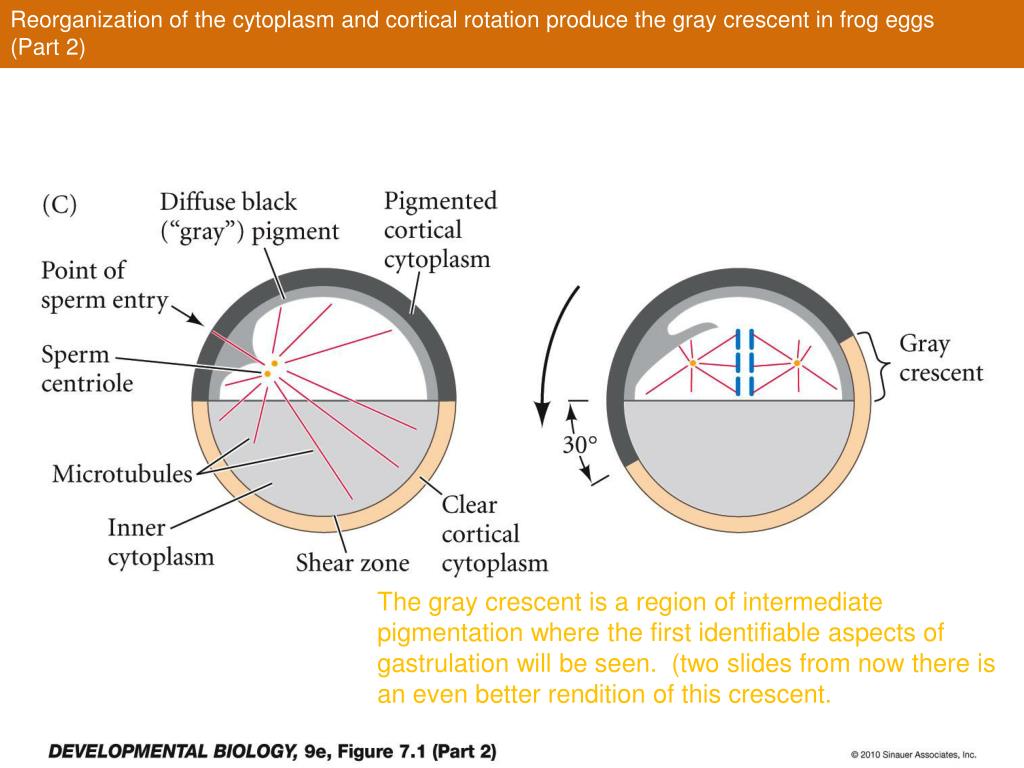

Cortex in this context designates the mass-dense peripheral layer of cytoplasm associated with the cell membrane. While the inner cytoplasm, heavy with dense yolk, sinks down and remains stabilized by gravity an active cortical rotation commences. Induced by the sperm and influenced by gravity, active movements within the egg lead to an asymmetrical rearrangement of egg components. However, not all components of the egg move to the same extent and in the same direction. The analysis of the phenomenon has led to a deeper understanding of oogenesis.įor dorsalization to occur, a uniform rotation of the entire, unaltered egg would not be much help. Before completion of meiosis in the oocytes of the 0-nu/1-nu mother, a normal chromosome was still present besides the mutant chromosome that was left after meiosis in the oocyte (while the normal chromosome was allocated to a polar body cell). Perhaps, in the oocytes from which the 0-nu/0-nu embryos arose, message for the production of ribosomes was transcribed before meiosis led to the haploid stage.

This would enable embryos arising from 0-nu eggs and 0-nu sperm to manufacture ribosomes without making use of their own genome, which lacks the corresponding genes. Then they died.This surprising finding prompted the working hypothesis that oocytes might be provided with ribosomal RNA and the message for ribosomal protein even before they undergo meiosis. However, surprisingly, embryonic development proceeded rather normally and the embryos even reached the stage of free-living tadpoles. The 0-nu/0-nu offspring who lacked both nucleoli were unable to produce ribosomes and, therefore, were not viable in the long term. Homozygous 0-nu/0-nu individuals (no nucleolus) (Even human gonadotropin can be used and injection of female urine to induce spawning in Xenopus was the first assay for pregnancy in human medicine.) In particular, Xenopus can be induced to spawn at any time by injection of chorionic gonadotropic hormones (Fig. Xenopus always stays in water, is easily maintained, and because Xenopus is bred in the laboratory, there is no need to take endangered animals from natural populations (species conservation).

Although surgery may be more difficult with this species, it has many other favourable features. Between 19 the leading role was assigned to a new protagonist, the African clawed toad Xenopus laevis (Figs. Under Hans Spemann, who was to win the Nobel Prize for his experimental studies with amphibians, embryos of newts (genus Triturus) became the principal actors in classic developmental biology. pipiens in America) were the preferred subjects that had to tolerate still rough surgical interventions. The eggs are suitable for microsurgical operations, which can be performed by hand with glass needles prepared in the laboratory no complicated and expensive apparatus is needed.Īt the beginning of experimental embryology eggs and embryos of frog specimens of the genus Rana ( R. Pieces cut out from an embryo are able to continue development in sterile salt solutions without added nutrients, thanks to a supply of yolk in each cell. The transparent jelly coat can easily be removed, surgically or chemically (after fertilization the envelope can be removed with 2.5 % cysteine-HCl, pH7.4). In addition, amphibian embryos develop outside the mother and are therefore accessible to experimentation at all stages. The amphibian egg is rich in yolk and large (often 1–2 mm in diameter), yet the egg is able to undergo holoblastic cleavage, and cleavage converts a typical blastula to a gastrula displaying textbook features. The modified development of reptiles, birds and mammals can be deduced readily from the amphibian model exemplified by frogs and newts. From the Ancient World (Aristotle, Box 1.1) up to the eighteenth century incubated chick eggs were the gold standard for animal development since 1900 amphibians took over this position. Figure 5.1 quotes the phylogenetic positions of vertebrates that are often investigated in the laboratory. Amphibians represent the archetype of vertebrate development.


 0 kommentar(er)
0 kommentar(er)
